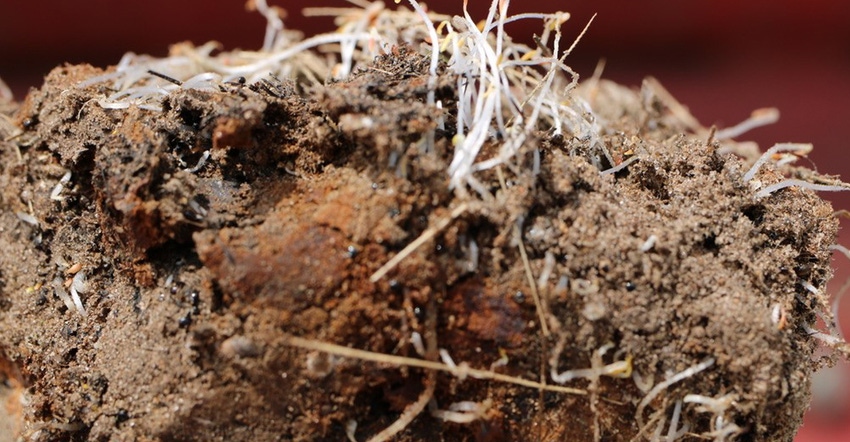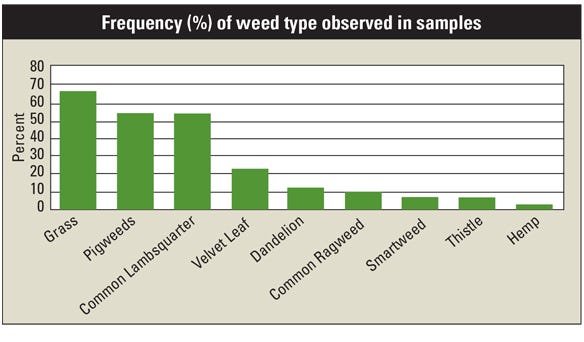August 19, 2021

You most certainly have heard of spring cleaning, but have you ever heard of harvest cleaning?
During harvest this year, you may want to take a few extra minutes to clean out your combine before moving between fields. A combine can contain up to 150 pounds of biomaterial, and this material often contains weed seeds. Herbicide-resistant weeds are a concern that continues to grow in the crop production landscape.
Limit spread of weed seed
Limiting the spread of weed seed between fields is a key part of an Integrated Pest Management system. This is especially important because the weeds present at harvest were allowed to produce seed and have survived other control attempts during the growing season. These weed seeds, if allowed to spread and germinate, have the potential to become difficult to control elsewhere.
Before cleaning a combine, always read, follow and understand all safety and operation instructions for the combine and cleaning equipment. Cleaning a combine will produce a lot of dust and debris; thus, personal protective equipment is necessary. Wear appropriate work clothes such as long pants and long-sleeve shirts or jackets that are not loose fitting. A respirator or dust mask with a NIOSH rating of N95 or P100 filter size, as well as eye protection, should be worn as well to protect against dust particles and debris. Cleaning will require a leaf blower or air compressor to blow out all the material, so ear protection should be worn.
The 2017 North Central Region Agriculture and Natural Resources Cropping Academy developed protocol to clean combines between fields that takes 20 to 30 minutes. Here is a summary:
1. Run unloading auger empty for at least one minute.
2. Open the clean grain and tailings elevator doors, rock trap, and unloading auger sump.
Make sure all bystanders are at least 50 feet away.
Optional: Remove the head/grain platform from the combine prior to self-cleaning.
3. Start the combine and separator.
Adjust the cleaning shoe fan to full speed for maximum airflow, and alternately open and close cleaning shoe sieves electronically.
Adjust the rotor to full speed for maximum air suction, and alternately open and close concaves.
4. Operate the combine this way for at least two minutes for self-cleaning.
Optional: Drive over end rows or rough terrain to dislodge material during operation.
5. Clean any material left in the rock trap.
6. Use a leaf blower or air compressor to remove material from the exterior of the combine, focusing on the head, feeder house, axle and straw spreader at the rear of the machine.
7. Remember to close the doors to the rock trap, and clean the grain elevator and the unloading auger sump.
How-to video available
Another optional step you can take to more thoroughly clean your combine is to pack about 1.5 cubic feet of wood shavings (livestock bedding) into the sump. Once packed, turn on the unloading auger and empty the shavings. Dan Smith, regional outreach specialist for the Nutrient and Pest Management Program, along with Kevin Jarek, Extension agriculture educator in Outagamie County, Wis., produced a detailed how-to video on cleaning a combine.
In 2019, Smith, along with Nick Arneson and Rodrigo Werle with the Wisconsin Cropping Systems Weed Science Lab, conducted a case study where 31 samples of debris from nine different combines were collected. When these samples were mixed with potting mix and soil, and tended to in a greenhouse, 97% of the samples contained viable weed seeds. The percent of samples with a particular weed seed present is illustrated in the following graph. Additionally, 9 of the 31 samples contained viable soybean seeds, and 15 of the 31 samples contained viable corn seeds.

The combine areas contained the following approximate quantities of total weeds emerged in percentages:
head/grain platform, 49%
feeder house, 30%
rock trap, 19%
rotor, 2%
Harvest is a busy time, and you may be pressed for time. If this is the case, the results of this study indicate that prioritizing the head and feeder house of the combine would provide the most impact in reducing weed spread for your time.
A few additional tips on reducing the spread of weeds would be to try and remove as many weeds from the field before harvest, and consider a location when cleaning that reduces the possibility of the weed seeds spreading. Additionally, harvesting fields that have the fewest weeds or are the “cleanest” before more heavily infested fields will also help prevent the spread of weeds.
Herbicide-resistant weeds will continue to grow as an issue for producers. Taking a half-hour between fields at harvest to clean your combine could potentially save you time and input costs in the future that you would have spent on controlling difficult populations of weeds.
Schmidt is the Extension ag educator in Shawano County, Wis.
You May Also Like




